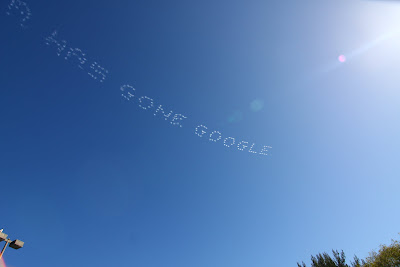Today, we’re excited to announce that Virgin America is the latest company to go Google and switch to Google Apps. Over the next two weeks, all of the airline’s 1,700 employees based across North America will be moving their corporate email to Gmail, and collaborating more efficiently using Google Calendar, Google Docs and Google Talk. Their migration to Gmail will cut Virgin America’s email system costs by about half on an annual basis, in addition to the long-term storage benefits where the move into the Google cloud will save them over 18 terabytes of space as the airline continue to grow and add employees.


To make it easier for Virgin America make the switch, one of our Google Apps Authorized Resellers, SADA Systems, will be helping them deploy Google Apps, implementing single sign-on user access so that users can use one password to log in to multiple applications, integrating with telephony (voicemail) systems and doing custom email configuration.
We asked Ravi Simhambhatla, Chief Information Officer for Virgin America to share his thoughts about why they decided to go Google:


Photos of our skywriting this afternoon
To make it easier for Virgin America make the switch, one of our Google Apps Authorized Resellers, SADA Systems, will be helping them deploy Google Apps, implementing single sign-on user access so that users can use one password to log in to multiple applications, integrating with telephony (voicemail) systems and doing custom email configuration.
We asked Ravi Simhambhatla, Chief Information Officer for Virgin America to share his thoughts about why they decided to go Google:
As the only airline based here in Silicon Valley, our goal has always been to use the best in technology and design to reinvent the air travel experience for the better. We’re eager to bring the latest and greatest tech innovations not only to our guests—but also to our teammates. The transition to a cloud-based email system allows us to save costs and increase the speed and efficiency of our platforms, so we can focus on what we do best: elevating the flying experience. Google answers our data and connectivity needs better than any other system. Google Apps allow us to stay ahead of the competition by remaining flexible and efficient since we can upgrade based on the latest technology, and not be confined by budget or staffing to out-of-date systems. Once you have Google Apps, you always have the most recent version.As a leading airline innovator, Virgin America has had a history of cloud firsts: in November 2008, Virgin America launched in-flight Internet with a first-ever "air-to-ground" video stream to YouTube Live. In June 2009, we collaborated on the Day in the Cloud Challenge, the first online scavenger hunt to be played both in the air and on the ground, and in December 2009 we teamed up to offer free WiFi to holiday travelers. So naturally, we’re thrilled to welcome Virgin America to the cloud as they join more than 3 million companies that have gone Google. To learn more about Google Apps and the companies that have switched, visit www.google.com/gonegoogle.






